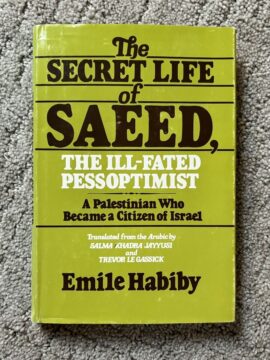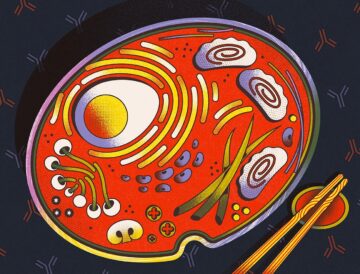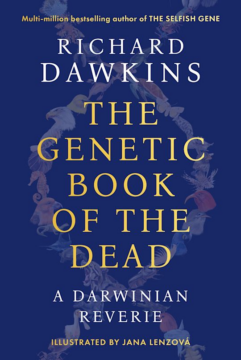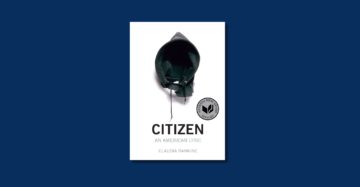Manuel Ansede in El País:
 Terence Tao snorts and waves his hands dismissively when he hears that he is the most intelligent human being on the planet, according to a number of online rankings, including a recent one conducted by the BBC. He is, however, indisputably one of the best mathematicians in history. When he was two, his parents saw him teaching another five-year-old boy to count.
Terence Tao snorts and waves his hands dismissively when he hears that he is the most intelligent human being on the planet, according to a number of online rankings, including a recent one conducted by the BBC. He is, however, indisputably one of the best mathematicians in history. When he was two, his parents saw him teaching another five-year-old boy to count.
“That’s what my parents told me. I don’t remember this myself. They asked me who I had learned it from. I said, from Sesame Street,” says Tao, 49, who was born in the Australian city of Adelaide. When he was 11, he won a bronze medal at the International Mathematical Olympiad. At 12, he took home silver. At 13, gold. At 21, he received his doctorate from Princeton University. At 24, he was already a professor at the University of California in Los Angeles. And at 31, he won the Fields Medal, considered the Nobel Prize in his discipline.
More here.
Enjoying the content on 3QD? Help keep us going by donating now.

 The Palestinian Nakba produced, alongside death and displacement, a generation of writers who came of age in its aftermath. The moment seemed to demand a funereal tone from artists who had witnessed the tragedy. For them, a version of Theodor Adorno’s maxim, that to “to write poetry after Auschwitz is barbaric,” rung true. Few broke the taboo.
The Palestinian Nakba produced, alongside death and displacement, a generation of writers who came of age in its aftermath. The moment seemed to demand a funereal tone from artists who had witnessed the tragedy. For them, a version of Theodor Adorno’s maxim, that to “to write poetry after Auschwitz is barbaric,” rung true. Few broke the taboo.
 It’s not immoral to kick a rock; it is immoral to kick a baby. At what point do we start saying that it is wrong to cause pain to something? This question has less to do with “consciousness” and more to do with “sentience” — the ability to perceive feelings and sensations. Philosopher Jonathan Birch has embarked on a careful study of the meaning of sentience and how it can be identified in different kinds of organisms, as he discusses in his new open-access book
It’s not immoral to kick a rock; it is immoral to kick a baby. At what point do we start saying that it is wrong to cause pain to something? This question has less to do with “consciousness” and more to do with “sentience” — the ability to perceive feelings and sensations. Philosopher Jonathan Birch has embarked on a careful study of the meaning of sentience and how it can be identified in different kinds of organisms, as he discusses in his new open-access book  For Christmas lunch, 1937, Virginia and Leonard Woolf hosted John Maynard Keynes and his wife, Lydia. Imagine the talk, which no doubt ranged widely, including gossip about younger writers like W. H. Auden, the recipient that autumn of the King’s Gold Medal for Poetry from George VI himself. A lot of people were saying it: Auden was the man to watch. At only thirty, he was already regarded as England’s leading poet, head of a squadron of younger writers, including Louis MacNeice, C. Day-Lewis and Stephen Spender. According to Nicholas Jenkins’ important new book, The Island: War and Belonging in Auden’s England,
For Christmas lunch, 1937, Virginia and Leonard Woolf hosted John Maynard Keynes and his wife, Lydia. Imagine the talk, which no doubt ranged widely, including gossip about younger writers like W. H. Auden, the recipient that autumn of the King’s Gold Medal for Poetry from George VI himself. A lot of people were saying it: Auden was the man to watch. At only thirty, he was already regarded as England’s leading poet, head of a squadron of younger writers, including Louis MacNeice, C. Day-Lewis and Stephen Spender. According to Nicholas Jenkins’ important new book, The Island: War and Belonging in Auden’s England, THERE’S A REASON why so many people regard Ronald Reagan as America’s last great leader. The further the monolithic Hollywood of the storied past recedes into the fragmented fun house of the media present, the more mythic the stellar avatars appear. One such divinity: straight-talking, honorable, unassuming, heroic Henry Fonda (1905–1982).
THERE’S A REASON why so many people regard Ronald Reagan as America’s last great leader. The further the monolithic Hollywood of the storied past recedes into the fragmented fun house of the media present, the more mythic the stellar avatars appear. One such divinity: straight-talking, honorable, unassuming, heroic Henry Fonda (1905–1982). How does the brain
How does the brain Reboot your immune system with intermittent fasting. Help your ‘good’ bacteria to thrive with a plant-based diet. Move over morning coffee: mushroom tea could bolster your anticancer defences. Claims such as these, linking health, diet and immunity, bombard supermarket shoppers and pervade the news. Beyond the headlines and product labels, the scientific foundations of many such claims are often based on limited evidence. That’s partly because conducting rigorous studies to track what people eat and the impact of diet
Reboot your immune system with intermittent fasting. Help your ‘good’ bacteria to thrive with a plant-based diet. Move over morning coffee: mushroom tea could bolster your anticancer defences. Claims such as these, linking health, diet and immunity, bombard supermarket shoppers and pervade the news. Beyond the headlines and product labels, the scientific foundations of many such claims are often based on limited evidence. That’s partly because conducting rigorous studies to track what people eat and the impact of diet  The car I bought in Hamburg had distinctive oval German export license plates, and an international registration sticker marked with a D, for Deutschland. As I drove through Holland on my way to Paris, more than once when asking for directions I received dirty looks, especially from older persons for whom the wartime German occupation was a living memory.
The car I bought in Hamburg had distinctive oval German export license plates, and an international registration sticker marked with a D, for Deutschland. As I drove through Holland on my way to Paris, more than once when asking for directions I received dirty looks, especially from older persons for whom the wartime German occupation was a living memory. In The Oxford Book of Modern Science Writing (2008), Richard Dawkins writes:
In The Oxford Book of Modern Science Writing (2008), Richard Dawkins writes: Why are some countries richer than others? The 2024 Sveriges Riksbank Prize in Economic Sciences in Memory of Alfred Nobel has been awarded to three researchers who have helped shed light on this fundamental question.
Why are some countries richer than others? The 2024 Sveriges Riksbank Prize in Economic Sciences in Memory of Alfred Nobel has been awarded to three researchers who have helped shed light on this fundamental question. J
J Foucault was greatly disturbed by modern psychiatry’s ability to draw definitive lines between the ‘reasonable’ and the ‘unreasonable’. He came to see it as another way for society to punish and marginalise its most troublesome subjects. Deploying the metaphor of a circulatory system, he conceived of psychiatrists as figures of ‘capillary’ power – unlike the conspicuous, beating heart of the state, these authorities functioned as more subtle, distal agents of the status quo. Writing in the 1960s and ’70s, Foucault saw the psychoanalytic therapists of his day as the latest technicians managing ‘one of the West’s most highly valued techniques for producing truth of one kind or another’ – the confession. This is the idea that disclosing one’s inner darkness leads to salvation, truth, self-actualisation. There is an important similarity between how this dynamic plays out in the church and the clinic: ‘bravely confront and share the ugly things inside you’ equally describes the task of the confessional booth as it does the therapist’s couch. In both cases, there is more at play here than simple unburdening: it is not just that ‘shared sorrow is half sorrow’, as in the case of confiding in a friend, but also that having an adversarial encounter with yourself can be fruitful in some way.
Foucault was greatly disturbed by modern psychiatry’s ability to draw definitive lines between the ‘reasonable’ and the ‘unreasonable’. He came to see it as another way for society to punish and marginalise its most troublesome subjects. Deploying the metaphor of a circulatory system, he conceived of psychiatrists as figures of ‘capillary’ power – unlike the conspicuous, beating heart of the state, these authorities functioned as more subtle, distal agents of the status quo. Writing in the 1960s and ’70s, Foucault saw the psychoanalytic therapists of his day as the latest technicians managing ‘one of the West’s most highly valued techniques for producing truth of one kind or another’ – the confession. This is the idea that disclosing one’s inner darkness leads to salvation, truth, self-actualisation. There is an important similarity between how this dynamic plays out in the church and the clinic: ‘bravely confront and share the ugly things inside you’ equally describes the task of the confessional booth as it does the therapist’s couch. In both cases, there is more at play here than simple unburdening: it is not just that ‘shared sorrow is half sorrow’, as in the case of confiding in a friend, but also that having an adversarial encounter with yourself can be fruitful in some way. Representing suffering—how to do it, when we should do it at all—has long been a subject of debate. At the center of that debate is the role of the audience: how do we, as readers and viewers, witness depictions of violence in images, films, plays, or literature?
Representing suffering—how to do it, when we should do it at all—has long been a subject of debate. At the center of that debate is the role of the audience: how do we, as readers and viewers, witness depictions of violence in images, films, plays, or literature? The Swedish Academy is not here to tell you what writers you might like. Greatness is not the same as popularity. It may even be the opposite of popularity. Great books are by definition not the books you read for pleasure — even if some of them turn out to be, and may even have been intended to be, fun — and great writers, being mostly dead, don’t care if they’re your favorites. The great books are the ones you’re supposed to feel bad about not having read. Great writers are the ones who matter whether you read them or not.
The Swedish Academy is not here to tell you what writers you might like. Greatness is not the same as popularity. It may even be the opposite of popularity. Great books are by definition not the books you read for pleasure — even if some of them turn out to be, and may even have been intended to be, fun — and great writers, being mostly dead, don’t care if they’re your favorites. The great books are the ones you’re supposed to feel bad about not having read. Great writers are the ones who matter whether you read them or not.